Android Central Verdict
With the OnePlus 11R, OnePlus has managed to distil the essentials of the OnePlus 11 in a much more affordable package. The phone has the same design as its costlier sibling, the same great 50MP camera at the back, identical battery and 100W charging tech, and outstanding hardware that's ideal for gaming. Sure, there are a few flaws here — the screen isn't quite as bright, you miss out on a few extras, and the auxiliary cameras aren't worth your time. But if you're in India and want to save some cash on a value flagship, the OnePlus 11R is the one to get.
Pros
- +
Similar design as the OnePlus 11
- +
Excellent 50MP camera at the back
- +
Large battery with 100W charging
- +
Stellar for gaming
- +
Best value in OnePlus's portfolio
Cons
- -
Poor auxiliary cameras
- -
No wireless charging
- -
Screen not as good as OnePlus 11
- -
Fingerprint sensor is located too low
- -
No IP rating
- -
Not launching outside India
Why you can trust Android Central
The OnePlus 11 ticks all the right boxes, and although we didn't get a Pro model this time, the standard variant has all the features you need in a high-end phone in 2023. The phone has a good design, vibrant QHD+ screen, stellar hardware, good battery life with fast charging, and amazing cameras.
For me, the differentiator this year is the cameras; OnePlus finally got its act together, and the OnePlus 11 takes phenomenal photos in just about any lighting condition. Considering the phone costs ₹56,999 ($696) in India, you are getting a lot for your money.
But what if you don't want to pay that much? Thankfully, there's an alternative just for Indian users in the form of the OnePlus 11R. The 11R takes the fundamentals of the standard OnePlus 11 and offers in a much more value-focused package, and the best part is that it gets the same 50MP main camera as the standard model.
I wasn't a fan of earlier models in the R series; the 10R was one of the ugliest phones I used last year, and the 9R didn't move the needle too much. But with the OnePlus 11R, you get a device that has the same design and camera as the OnePlus 11 but for significantly less money. If you're in India, here's why I think you should get the OnePlus 11R in lieu of the OnePlus 11.
OnePlus 11R: Availability

OnePlus launched the OnePlus 11R alongside the OnePlus 11 and TV 65 Q2 Pro at its Cloud 11 event in New Delhi on February 7, and the phone is now on sale in India. Like earlier launches in the R series, the OnePlus 11R is limited to India, and won't make its way to other markets. That said, the same model is sold in China under the Ace 2 label.
The OnePlus 11R is sold in two variants in India: an 8GB/128GB model that's selling for ₹39,999 ($488), and a 16GB/256GB version that costs ₹44,999 ($550). That's considerably less than the ₹56,999 ($696) that you'd be shelling out for the standard OnePlus 11 in the country.
OnePlus 11R: Design

I used the OnePlus 11R for the better part of a week, and I wasn't able to tell the difference between the device and the standard OnePlus 11. The 11R looks identical to the standard OnePlus 11 at the back, and the only difference is the lack of the Hasselblad logo in the middle of the camera housing. It also misses out on the glittery pattern that's visible on the camera island of the OnePlus 11, but outside of those minor variances, these could be the same phone.
The fact that the 11R has the same design as its costlier sibling gives it a much more upmarket look, and I have to say that this is one of the best-looking phones in its category. The 11R is a smidgen taller, wider, and thicker than the OnePlus 11, but you'll only notice it with both phones side-by-side. I'm using the black version of the phone, and it has the same glossy finish at the back as the standard model.
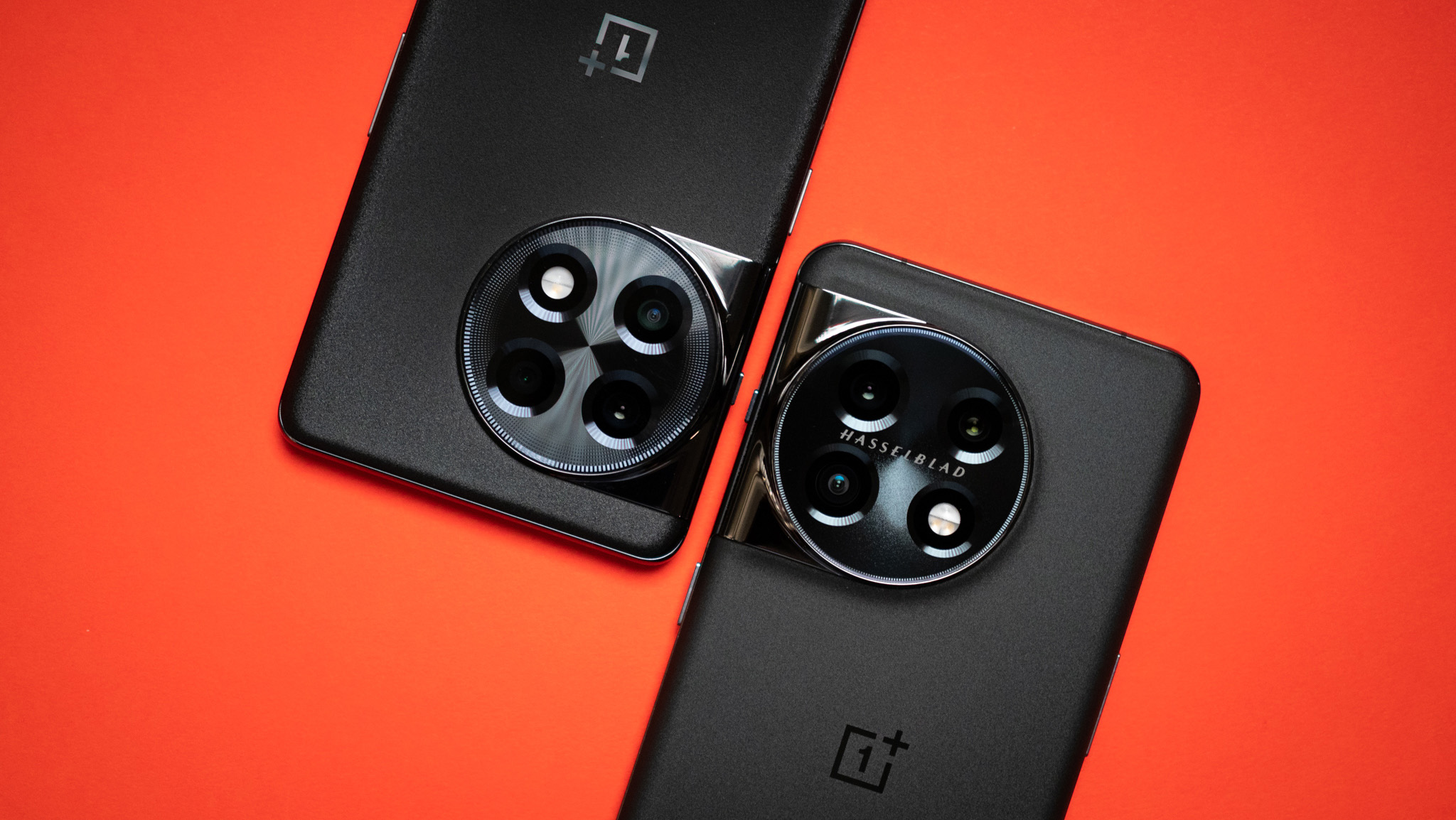
Like the regular version, the 11R has excellent in-hand feel, and the weight distribution is ideal. There's also the alert slider, and the ports are in the same location as the standard model: you'll find a dual-SIM slot at the bottom, IR blaster up top, and the volume button on the left. You get the same Gorilla Glass 5 layer at the back as the standard model.
It's nice to see the alert slider intact on the phone — that's still a big hardware differentiator for OnePlus. That said, the 11R misses out on IP64 rating, so you don't get any sort of resistance against the elements. It should still weather the occasional splash of rain or water, but without an official ingress protection rating, any sort of water damage will not be covered by the warranty.
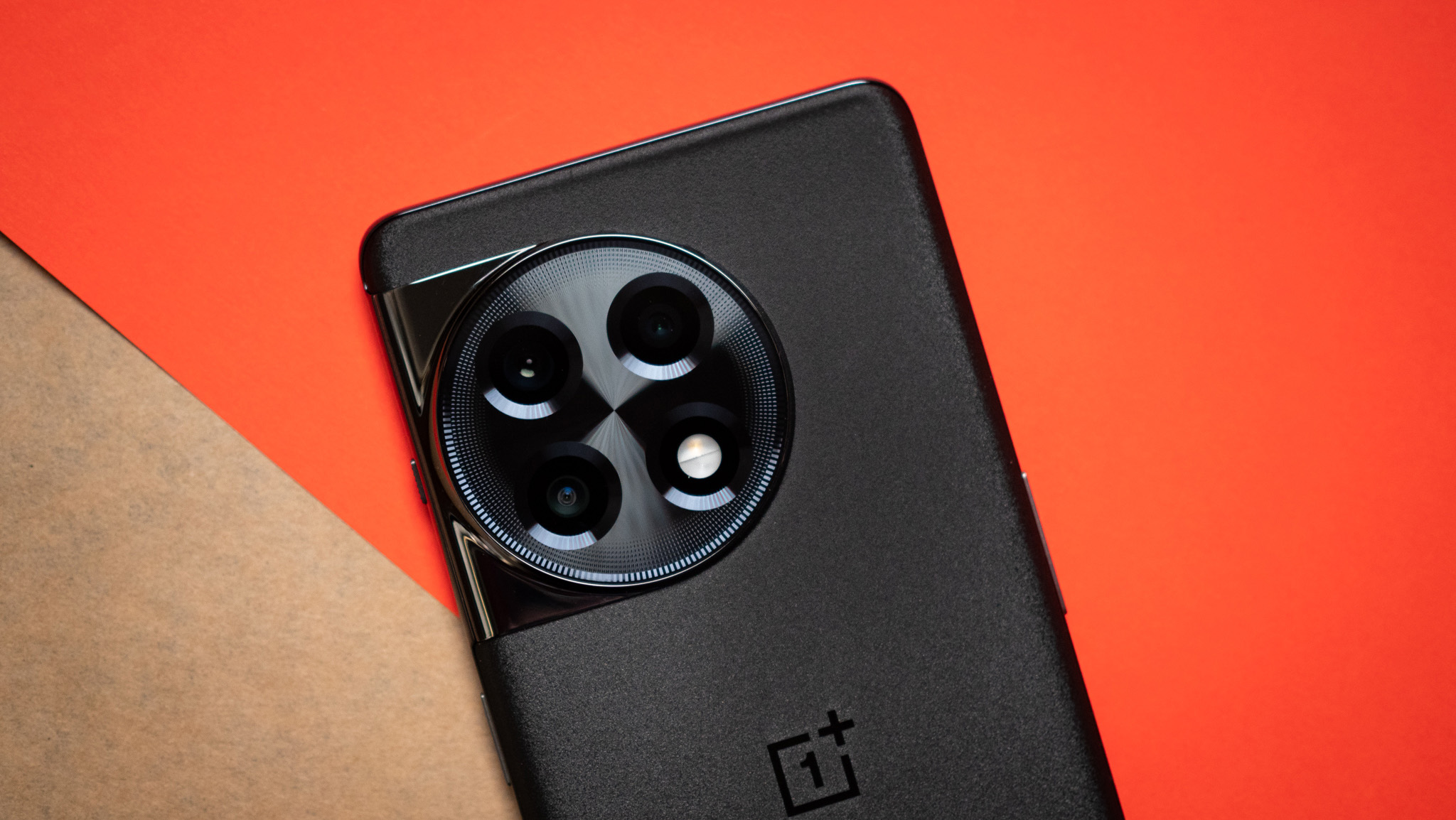



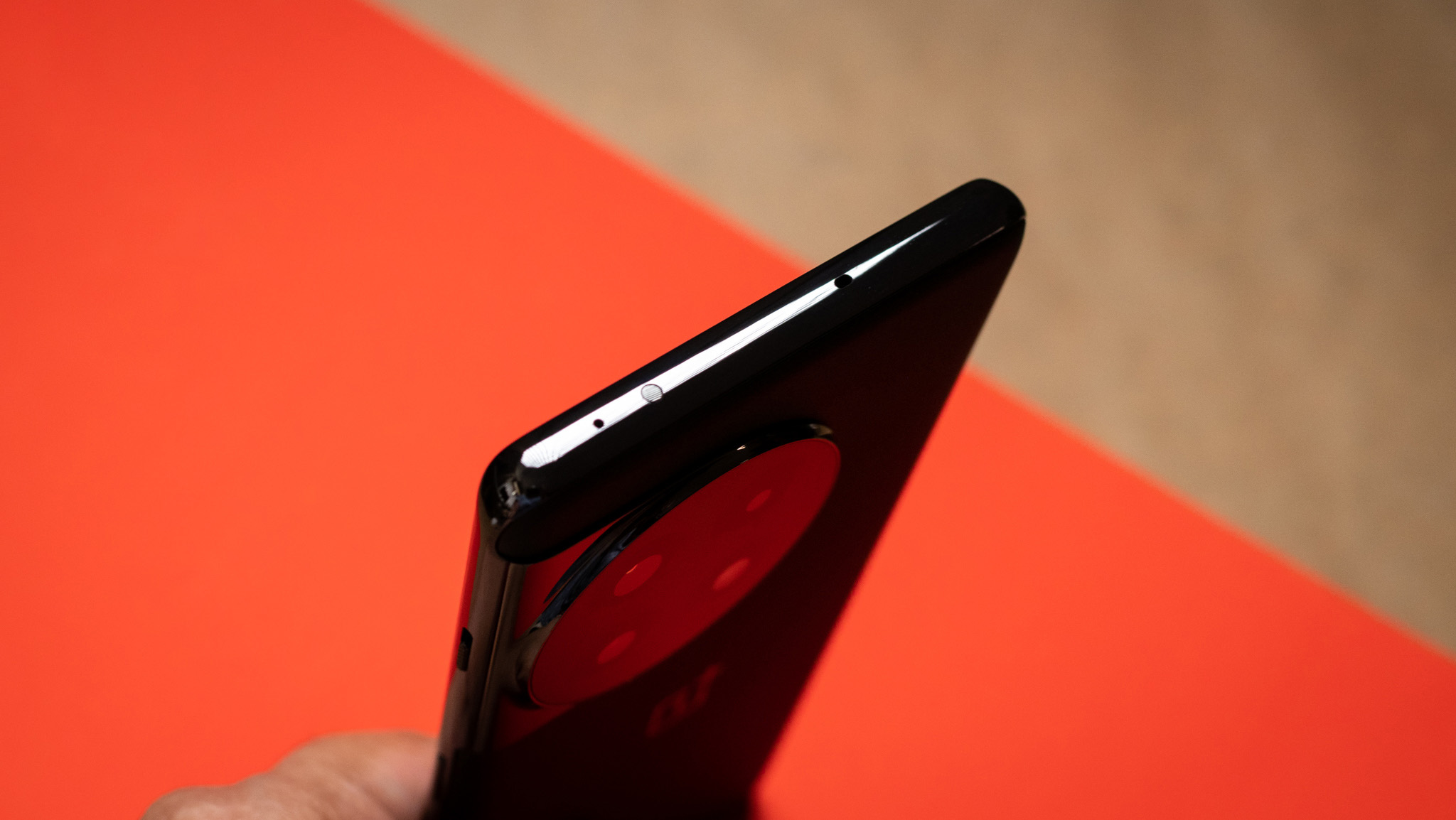

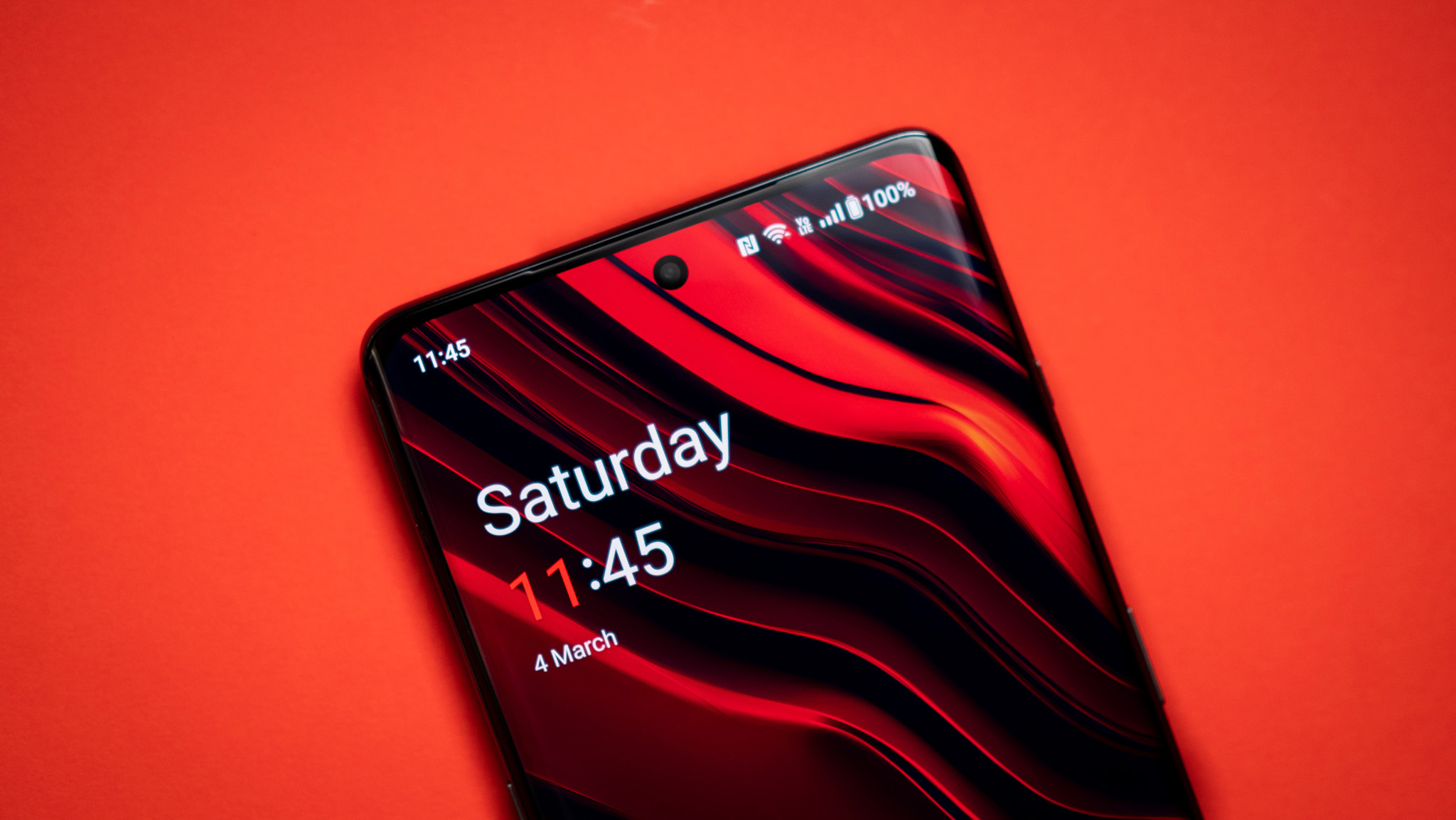

Because the 11R is aimed at the mid-range category, it uses a plastic mid-frame instead of the metal housing that's featured in the standard model. Again, you'll only notice the difference when using the phone next to the OnePlus 11.
Another area where the device differs to the standard model is the location of the fingerprint sensor; it sits too low on the screen, so you'll have to awkwardly maneuver your thumb to unlock the phone. I had this issue on the OnePlus 9 series, but OnePlus fixed the positioning of the optical module on the OnePlus 10 series and the OnePlus 11, so I don't really know why the 11R has the sensor further below on the screen. It makes unlocking the phone more cumbersome than it needs to be, and I had to switch to face unlock instead.
Other than that quibble and the lack of water resistance, OnePlus got the basics right with the 11R. This is a good-looking phone that has a great in-hand feel, and unlike last year, the alert slider is intact. This is basically one of the best OnePlus phones of 2023.
OnePlus 11R: Display

The OnePlus 11 features a 6.74-inch AMOLED panel with an FHD+ (2772 x 1240) resolution and 120Hz refresh. You get HDR10+ and HLG, and while the overall brightness is touted to be 1,450 nits for HDR content, that doesn't measure up in real-world use. When viewing the same HDR content on the 11R and the standard model, the latter was consistently brighter and did a better job managing colors.
Similarly, the 11R misses out on LTPO, with the phone instead switching between 60Hz and 120Hz. As a result, you don't get the same stellar battery figures as the standard model, but there are no issues as such in daily use — the screen feels fluid while browsing, going through social media, and generally navigating the interface.
The OnePlus 11R utilizes the same curved sides as the regular version, and I think OnePlus should have offered a flat display instead. That would have made the device stand out a bit more as not everyone likes a curved screen. That said, the curvature itself is marginal, and it doesn't feel unwieldy to use. On that note, I'm not a fan of the positioning of the selfie camera — it's located in the center, and the large cutout is more intrusive than the standard model, where it is on the side.

While the phone doesn't have the latest Qualcomm silicon, the hardware on offer is more than adequate for demanding games. That said, the 11R is limited to 60fps for gaming, so even for titles that go beyond 60fps, that isn't possible — this is a limitation on the OnePlus 11 as well.
You get a decent selection of always-on modes, and like the OnePlus 11, the contextual info that was meant to go live two years ago is still not available, so you won't be able to monitor the likes of Swiggy and Zomato directly on the home screen. There's stereo sound here, and it is decent enough for streaming the occasional YouTube video.
Overall, the OnePlus 11R doesn't quite measure up to the standard OnePlus 11 in this regard, but the panel quality is fine considering what the device costs, and ultimately, that's what matters at the end of the day.
OnePlus 11R: Performance and battery

This will be a relatively short section as there isn't much to talk about on the hardware side of things. The OnePlus 11R is powered by the Snapdragon 8+ Gen 1, and it absolutely flies in daily use — you won't find any slowdowns or lag in daily use. The software doesn't have major shortcomings either, and that more than anything else is the biggest differentiator over last year.
The phone handles demanding games without breaking a sweat, and it's easy to see that there's a lot of overhead when it comes to the hardware. Sure, there is some overheating after extended use — this is where the Snapdragon 8 Gen 2 does better — but the device was never uncomfortably hot.
| Category | OnePlus 11R |
|---|---|
| OS | OxygenOS 13, Android 13 |
| Display | 6.74-inch 120Hz AMOLED, FHD+ (2772 x 1240), Gorilla Glass 5 |
| Chipset | Qualcomm Snapdragon 8+ Gen 1, 1 x 3.0GHz Cortex X2, 3 x 2.5GHz Cortex A710, 4 x 1.8GHz Cortex A510, Adreno 730, 4nm |
| RAM | 8GB/16GB LPDDR5X |
| Storage | 128GB/256GB UFS 3.1 |
| Rear camera 1 | 50MP Sony IMX890, f/1.8 1/1.56-inch sensor, PDAF, OIS, 8K at 30fps, 4K at 60fps |
| Rear camera 2 | 8MP f/2.2 wide-angle lens, 120-degree FoV |
| Rear camera 3 | 2MP f/2.4 macro |
| Front camera | 16MP Sony IMX471, fixed focus |
| Connectivity | Sub-6 5G, Wi-Fi 6, Bluetooth 5.3, NFC |
| Audio | Stereo sound, USB-C audio |
| Audio codecs | AptX, AptX HD, LDAC, LHDC, SBC, AAC |
| Ingress Protection | None |
| Security | In-screen optical fingerprint module |
| Battery | 5000mAh, 100W fast charging |
| Dimensions | 163.4 x 74.3 x 8.7mm. 204g |
| Colors | Black, Silver |
You get 8GB of LPDDR5X RAM as standard, and there's a 16GB variant as well. Both the 128GB and 256GB storage variants feature UFS 3.1 modules, and you miss out on UFS 4.0. That isn't a big omission considering UFS 3.1 is still plenty fast for just about any use case at the moment. The phone has adequate 5G bands for use in India, and you get Wi-Fi 6, Bluetooth 5.3, NFC, and the usual AptX HD audio codec.
As for battery life, I had zero issues getting the phone to last a full day with heavy use. That's down to the large 5000mAh battery, and even with screen time exceeding six hours over the course of an 18-hour day, the OnePlus 11R hovered over the 15% mark.
OnePlus didn't make any changes to the battery tech, with the device offering the same 100W wired charging as the standard OnePlus 11. Again, this is a definite win for the device, and while the 10R had 150W charging last year, there isn't too much of a difference in real-world charging scenarios.
You'll find the same 100W USB-A charger in the box as the OnePlus 11, and in my testing, it took 28 minutes to fully charge the battery on the 11R.
OnePlus 11R: Cameras

The main highlight of the OnePlus 11R has to be the fact that it uses the same 50MP Sony IMX890 main camera as the OnePlus 11. This allows the device to take fabulous photos in challenging conditions, and gives it a distinct edge over most mid-range phones available in the country. Like the OnePlus 11, the 11R features OIS for the 50MP lens.
While it's wonderful to see that the 11R gets the same main camera as its costlier sibling, the auxiliary cameras aren't worth the hassle at all. There's an 8MP wide-angle lens with a 120-degree field of view, and a 2MP macro lens. Most brands have switched to using wide-angle lenses with autofocus that double as macro shooters, but that isn't the case here — the 11R gets a fixed-focus wide-angle lens, and a useless macro shooter that should never have made its way into the device.
Compounding the issue is that the wide-angle lens doesn't offer 4K video recording, and you're limited to 1080p at 30fps. The camera interface itself is similar to the OnePlus 11 — albeit without the orange accents — and it's straightforward enough to access all the shooting modes and switch between the wide-angle and main lens. The phone does 2x digital zoom, but even this is strictly average.
What's noticeable after using the 11R side-by-side with the OnePlus 11 is how similar it is to its costlier sibling when taking photos with the 50MP lens. Even though it misses out on the Hasselblad tuning, there isn't a whole lot that's different between the two devices. Sure, the OnePlus 11 has slightly warmer tones and better color vibrancy, but the 11R does an incredible job in its own right.
You get excellent shots in low-light situations, with the 11R consistently delivering images with minimal noise, accurate colors, and good detail. It holds its own against the standard model, and while the OnePlus 11 is able to manage highlights better and offer finer detail, the 11R isn't far behind.










The main 50MP camera produces stunning photos in daylight scenarios, with the resultant shots offering accurate colors and good dynamic range overall. The same is true in low-light situations as well, and while there are a few situations where the exposure is slightly lower, switching to the dedicated Night mode fixed those shortcomings.
I don't have anything negative to say about the main lens — OnePlus did all the right things with the 11R. However, the 8MP wide-angle lens isn't anywhere as good as the 48MP module you'll find on the OnePlus 11; it doesn't have the same color balance and struggles to maintain detail in challenging situations. I'm not even going to bother talking about the 2MP macro as it just isn't worth it.
If you need the versatility, then the OnePlus 11 is the go-to choice. But if you intend to use the 50MP main camera most of the time and don't mind the shoddy wide-angle lens, the OnePlus 11R is a good bargain.
OnePlus 11R: Software

The OnePlus 11R is running the same Android 13-based OxygenOS 13 build as the standard model, and in my usage, I didn't see anything that was different. Now, the software situation on OnePlus phones needs a bit of a clarification; although the software says it is OxygenOS, what you get here is ColorOS 13 with a different name.
As I covered in my OnePlus 11 review, there isn't anything in OxygenOS 13 that you don't already get in ColorOS 13, and for all intents and purposes, both skins are one and the same. Having said that, you'll find a lot to like in OxygenOS 13, and the interface finally feels stable — that wasn't the case for most of the last two years.
So while you no longer get the clean and uncluttered interface that was a huge differentiator in years past, the UI looks modern, and it has a few Material You influences, like the dynamic color picker. You also get a decent level of customizability here, and if you don't mind the overt styling, there is a lot to like.
As for software updates, the OnePlus 11R will get three years of Android OS updates along with four years of security patches, and that's one year less than the standard model. That means the phone will switch to Android 16 once that becomes available in a few years' time, but as for the timeliness of those updates, we'll have to wait and see.
OnePlus 11R: The competition
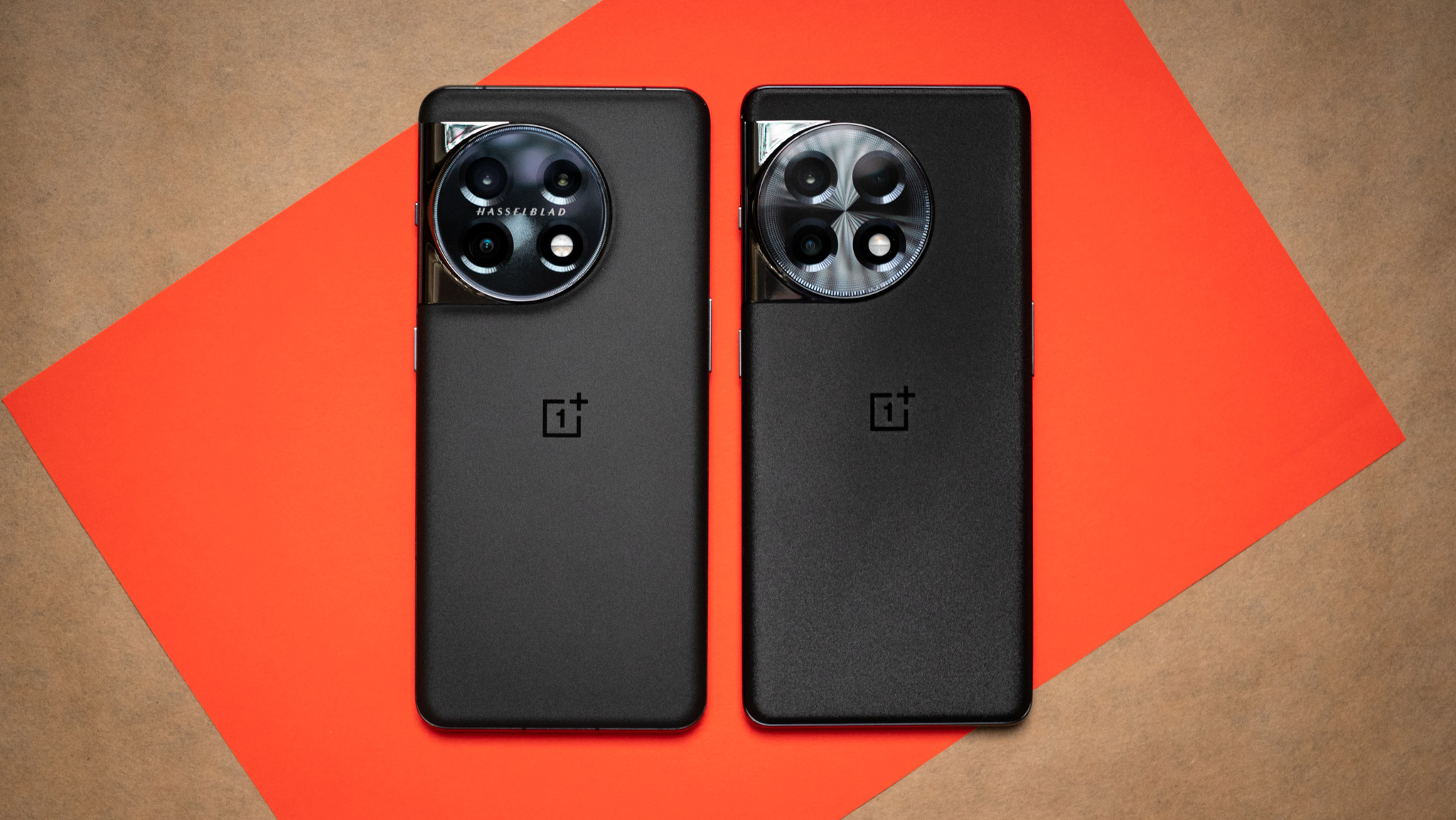
There's endless choice in this category, and if you want the best cameras, the Pixel 6a is still my recommendation. The phone doesn't cost as much as the OnePlus 11R, and while you miss out on a 120Hz panel, that is its only shortcoming. The hardware is incredible in daily use, you get the same number of software updates, and I'm partial to Google's design aesthetic. The software is a key differentiator as well, with Google offering a clean interface with Material You design and zero bloatware.
The Galaxy S21 FE is a decent enough choice, and although the device launched over a year ago, it still holds its own against its rivals. The phone feels great to hold and use, will get to Android 16, and I like what Samsung is doing with One UI 5.1. The S21 FE doesn't charge as fast, but the battery life is on par with other mid-range phones, and the cameras take good photos in any situation.
If you want a device that stands out, Realme's GT 2 Pro is also a contender. I used this phone for a bit last year and liked it quite a bit; the unique polymer back gives the device a lot of character, and it isn't short on power. You get amazing cameras at the back, and the wide-angle lens does a good job — it's definitely a cut above the 11R. You'll find similar shortcomings on the software side, but Realme OS is stable, and it is on Android 13.
OnePlus 11R: Should you buy it?

You should buy this if:
- You want a phone that holds its own against the latest flagships
- You need high-end hardware that's great for gaming
- You want a phone with a large battery and ultra-fast charging
- You want the best value
You shouldn't buy this if:
- You want a good wide-angle lens
- You need an IP rating
- You want a device with four Android OS updates
If you're in India and like the look of the OnePlus 11, you'd want to consider the 11R instead. The 50MP main camera is unchanged between the two devices, and as a result the 11R takes terrific photos in challenging scenarios. The fact that you're getting it for ₹17,000 less than the OnePlus 11 is a terrific bargain.
OnePlus left out a few things to get to that figure: there's no IP rating, the auxiliary cameras aren't worth your time, the screen doesn't get quite as bright, and I hate the positioning of the fingerprint sensor. While it doesn't affect usability, the mid-frame is made out of plastic and doesn't feel as good as the regular model. Furthermore, the OnePlus 11R will get one fewer software update.
If you don't mind the omissions and want a device that delivers the best value in this category, then yes, the OnePlus 11R is for you. The fact that you don't really miss out in key areas makes recommending the device a lot easier, and you're getting a lot of value for your money.

Harish Jonnalagadda is Android Central's Senior Editor overseeing mobile coverage. In his current role, he leads the site's coverage of Chinese phone brands, networking products, and AV gear. He has been testing phones for over a decade, and has extensive experience in mobile hardware and the global semiconductor industry. Contact him on Twitter at @chunkynerd.



